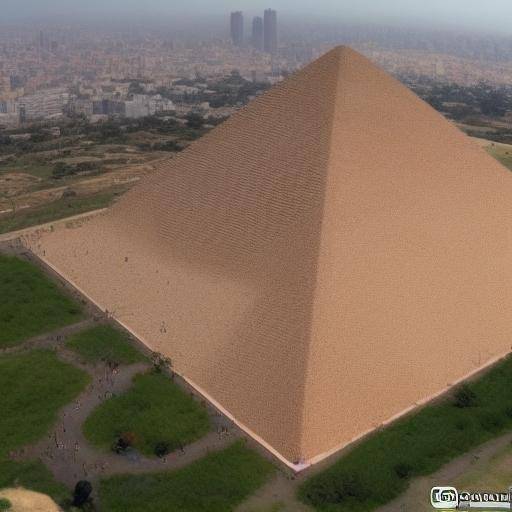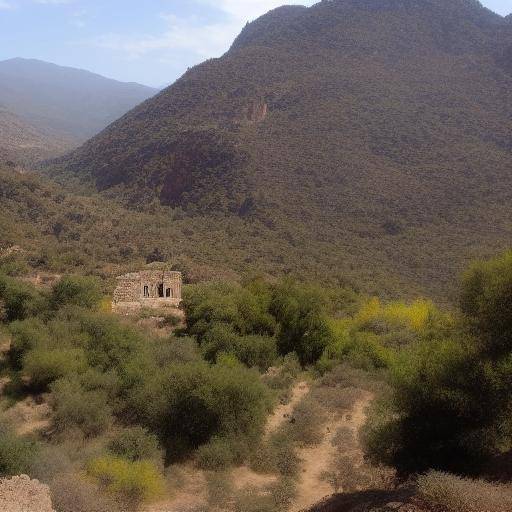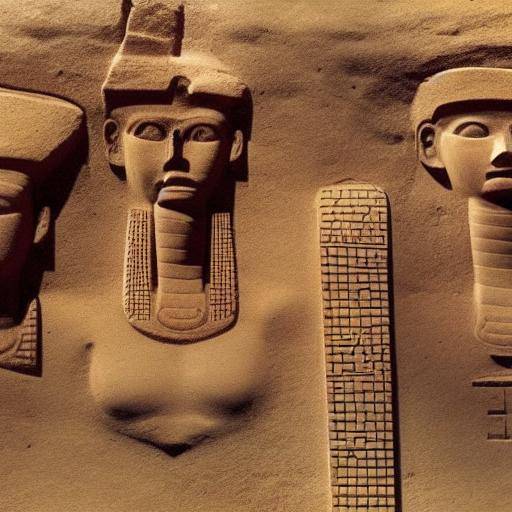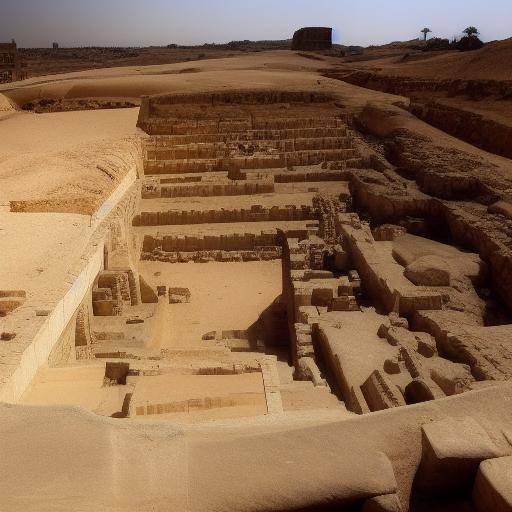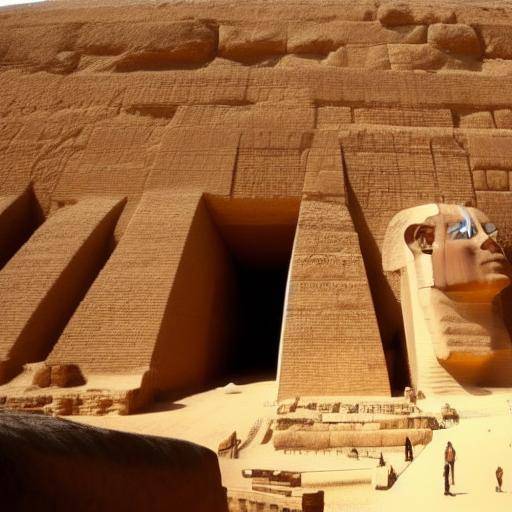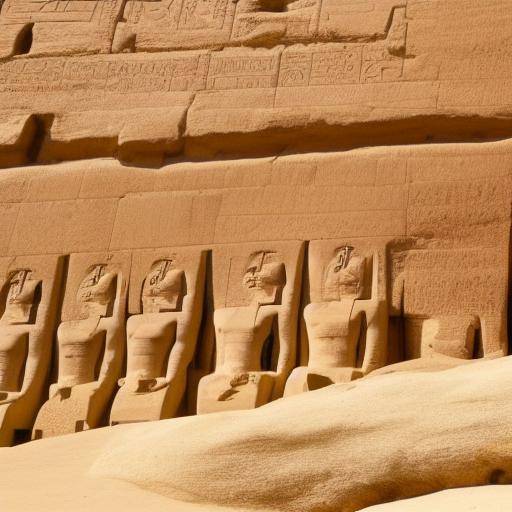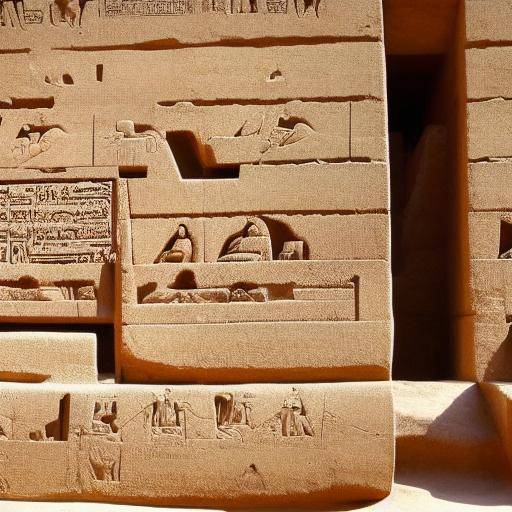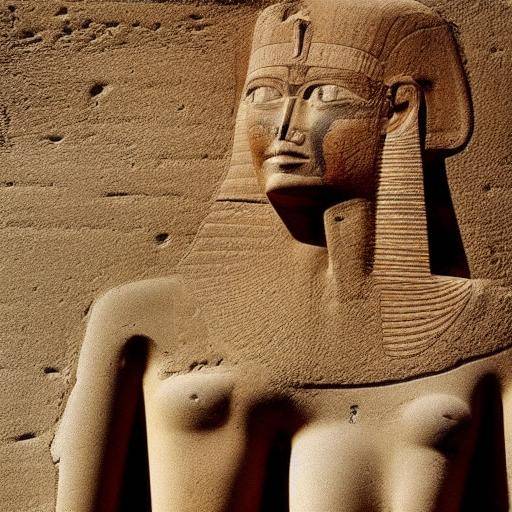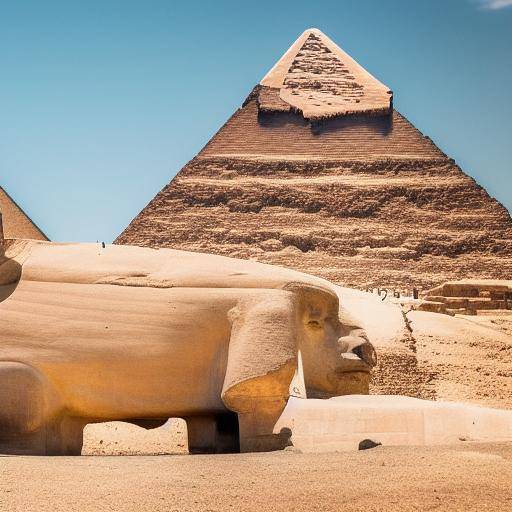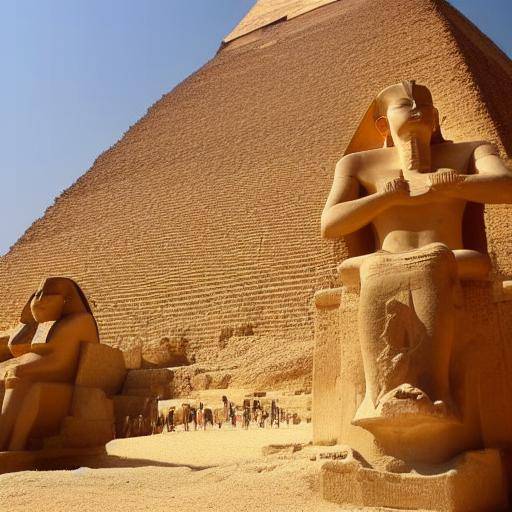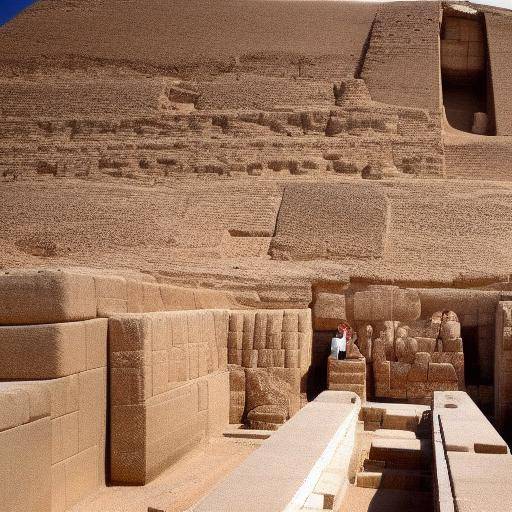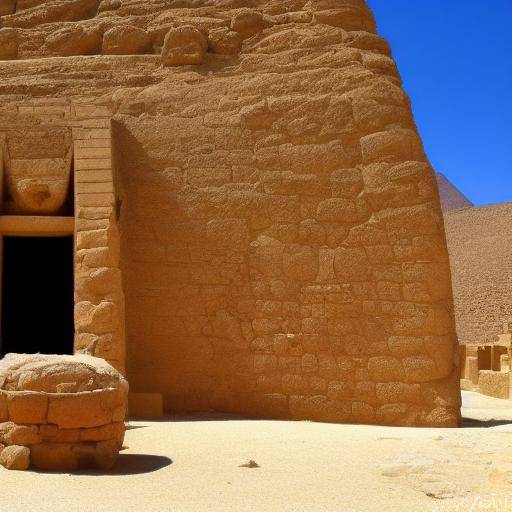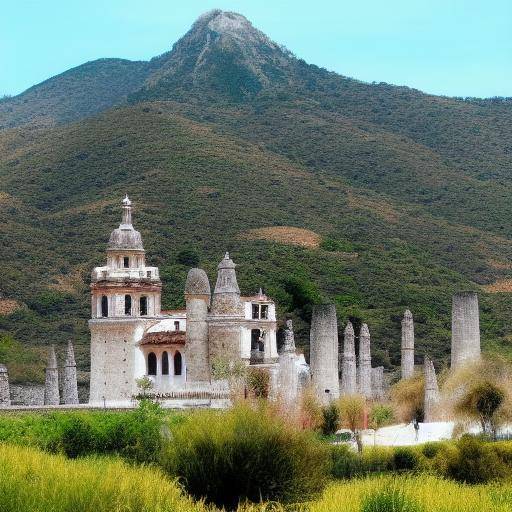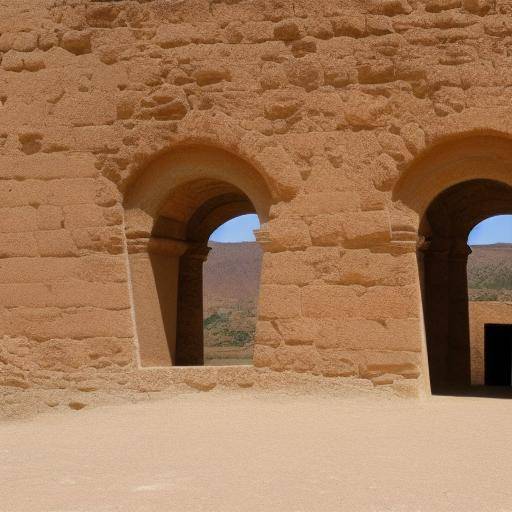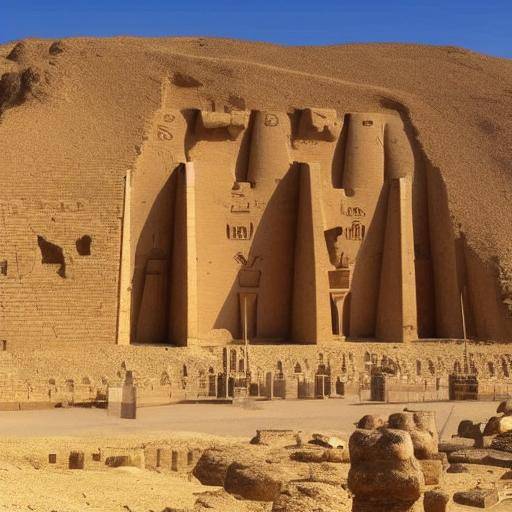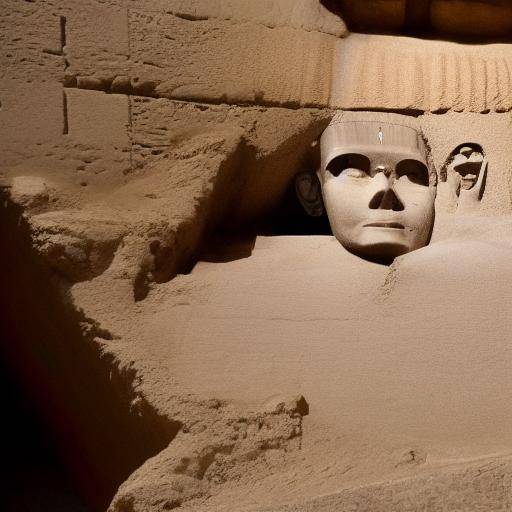
The ancient and mysterious monument of the Great Sphinx of Giza has fascinated people from all over the world for centuries. Located in Egypt and near the majestic Pyramids of Giza, this imposing figure has awakened the curiosity of archaeologists, historians and travelers alike. In this article, we will explore the history, mysteries and legends surrounding the Great Sphinx of Giza, as well as provide useful advice to those who wish to visit this emblematic site.
Introduction
The Great Sphinx of Giza, with its face of Pharaoh and lion's body, is one of the most enigmatic wonders of the ancient world. His imposing presence and mysterious smile have puzzled mankind for millennia. In this article, you will immerse yourself in the fascinating history and myths surrounding this iconic monument, know how to visit it and discover the secrets that make it so captivating.
History and Background
The Great Sphinx, which is believed to have been built around 2500 B.C., stands on the plateau of Giza, west of the Nile River. With its approximately 73 meters long and 20 meters high, this majestic sculpture has resisted the passage of time, becoming a lasting symbol of the grandeur of ancient Egypt.
The original purpose of the Great Sphinx remains the subject of debate among scholars. Some theorize that it was associated with solar cult, while others suggest that it was erected in honor of Pharaoh Kefrén. This uncertainty has increased the aura of mystery surrounding the Great Sphinx, making it an unresolved archaeological enigma.
Effects of ErosionOver the centuries, the Great Sphinx has suffered the effects of erosion caused by the wind and sand of the desert. This wear has led to numerous theories about the possible antiquity of the statue, as well as ongoing research to preserve its structure.
Legends and mythsThe Great Sphinx is not only impregnated with history, but it is also wrapped in numerous legends and myths. One of the best known narratives is the legend of Edipo, which tells that the sphinx raised a riddle to travelers, devouring those who could not solve it. The Greek hero Edipo managed to decipher the riddle and free the city of Thebes from the sfinge roof, which added a legendary dimension to the figure.
Analysis in Deep
Despite the fascination of the Great Sphinx, it also faces significant challenges today. The influx of tourists, environmental pollution and erosion remain important concerns for their long-term preservation. Conservation and restoration efforts remain a priority for the Egyptian authorities and international experts in order to ensure the integrity and splendor of this unique monument.
Comprehensive review
Today, the Great Sphinx of Giza remains a popular tourist destination, attractive for both history lovers and for curious travelers. Those who have the privilege of visiting this ancient monument can experience their powerful presence and immerse themselves in the aura of mystery that surrounds it. In addition, the proximity of the Great Sphinx to the Pyramids of Giza adds an additional appeal, offering visitors the opportunity to explore two of the most famous treasures of ancient Egypt in one place.
Comparative analysis
Compared to other emblematic structures in Egypt, such as the Pyramids of Giza, the Great Sphinx stands out for its uniqueness and enigma. While pyramids represent the architectural grandeur and mathematical precision of Egyptian civilization, the Great Sphinx evokes a sense of mysticism and enigma that has endured over the centuries.
Practical Tips and Accessible Tips
For those who have the desire to visit the Great Sphinx of Giza, careful planning is essential to maximize this unique experience. Some practical tips include:
- Investigate Before the Trip: Learning about the history and culture of ancient Egypt before the visit can significantly enrich the experience.
- Respect the Heritage: It is vital to preserve and respect this world heritage by ensuring that it does not damage the structure or its environment.
- Visiting hours: Know the opening and closing times of the site to plan the visit accordingly.
- Guided by Experts: Consider hiring local guides to get a deeper understanding of the history and mysteries surrounding the Great Sphinx.
Perceptions of Industry and Expert Reviews
Experts on archaeology, conservation of Egyptian heritage and studies have expressed their concern and admiration for the Great Sphinx of Giza. His views and analysis offer an invaluable insight into the historical and cultural significance of this unique monument, as well as the measures necessary for its long-term preservation.
Case Studies and Real Life Applications
The impact of the Great Sphinx is not limited to its historical and cultural role, but has also inspired artists, writers and filmmakers around the world. Its imposing and mysterious presence has been immortalized in numerous works of art, literature and films, perpetuating its influence beyond the borders of Egypt.
Future Trends and Predictions
As technology and archaeological research continue to advance, new perspectives and discoveries related to the Great Sphinx of Giza are expected to emerge. Moreover, with the growing interest in sustainable tourism, conservation and preservation efforts are likely to receive greater attention in the future.
Conclusions and FAQs (FAQs)
The Great Sphinx of Giza remains a lasting symbol of the splendour of ancient Egypt and an inexhaustible source of mystery and fascination. Its legacy persists in the imagination of people around the world, and its historical and cultural importance transcends the borders of time and space.
Frequently asked questions (FAQs)
1. What is the symbolic meaning of the Great Sphinx?
- The Great Sphinx represents for many the connection between humanity and nature, as well as the power and wisdom of ancient Egypt.
2. What is the best time of the day to visit the Great Sphinx of Giza?
- Most visitors recommend visiting the Great Sphinx at dawn or at sunset, when the light highlights its chiseled figure and creates a mystical atmosphere.
3. What are the conservation challenges facing the Great Sphinx?
- The erosion caused by sand and wind, as well as the impact of tourism, are significant challenges for the long-term preservation of the Great Sphinx of Giza.
4. How long do you need to explore the Great Sphinx and its surroundings?
- It is recommended to spend at least half a day to explore the Great Sphinx and nearby pyramids calmly and fully appreciate their greatness.
5. Are photographs allowed on the site of the Great Sphinx?
- Yes, visitors can take photographs, but it is essential to be respectful of the environment and follow the directions of the site staff.
6. What is the best way to get to the Great Sphinx of Giza from Cairo?
- The most common way is to take a taxi, an organized tour or use public transport, such as buses or trains, which lead to the Giza plateau, where you will find the Great Sphinx and pyramids.
In short, visiting the Great Sphinx of Giza is an incomparable experience that immerses visitors in the rich history and mysteries of ancient Egypt. As archaeological research and conservation efforts continue, their legacy will endure, inspiring present and future generations with their eternal enigma. Encourage yourself to discover the mystery of the Great Sphinx and marvel at its timeless grandeur!

